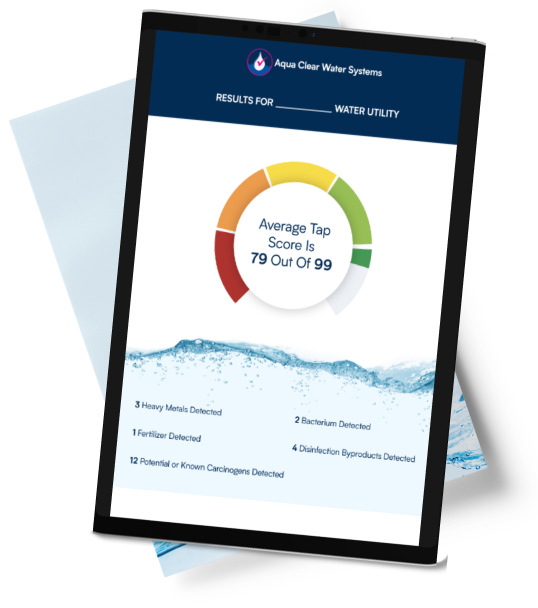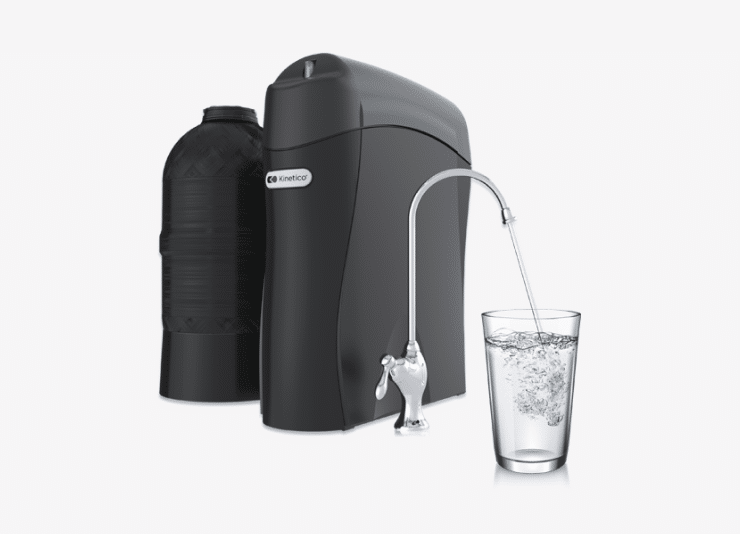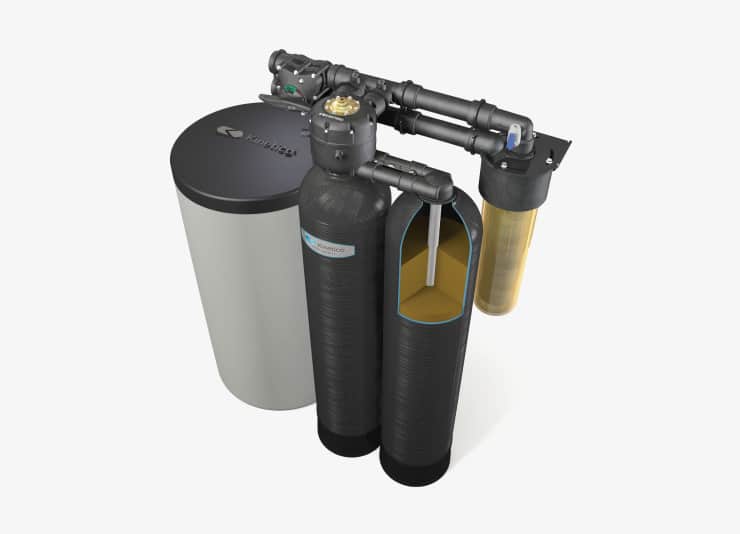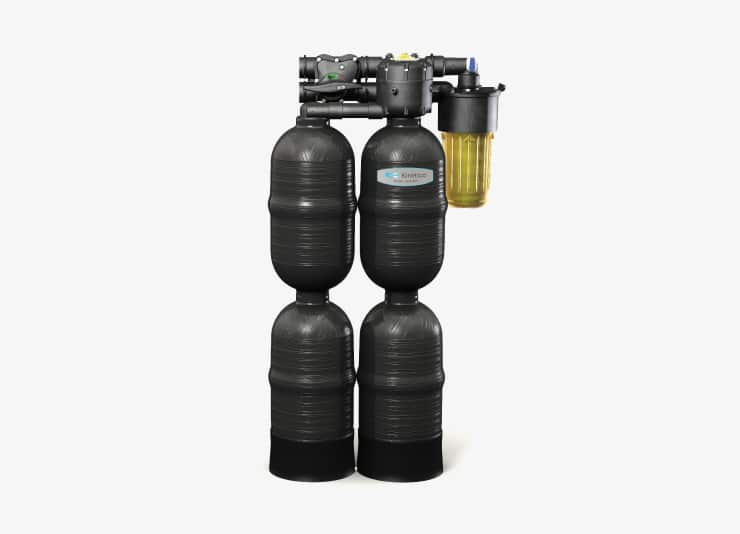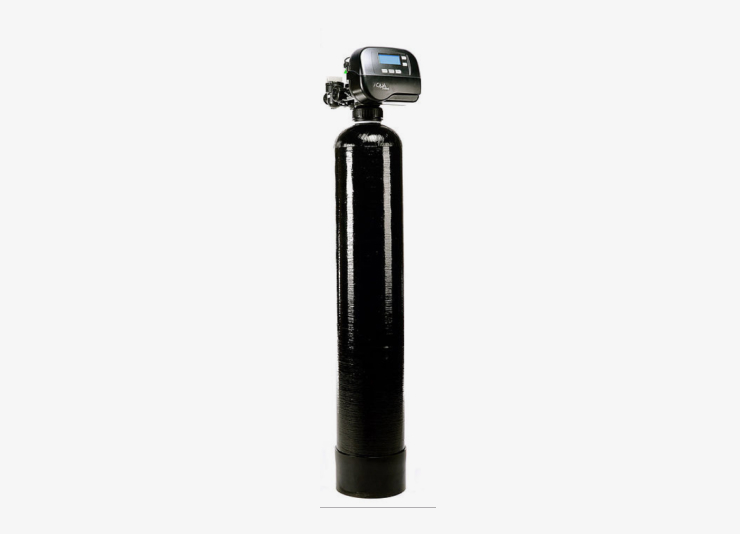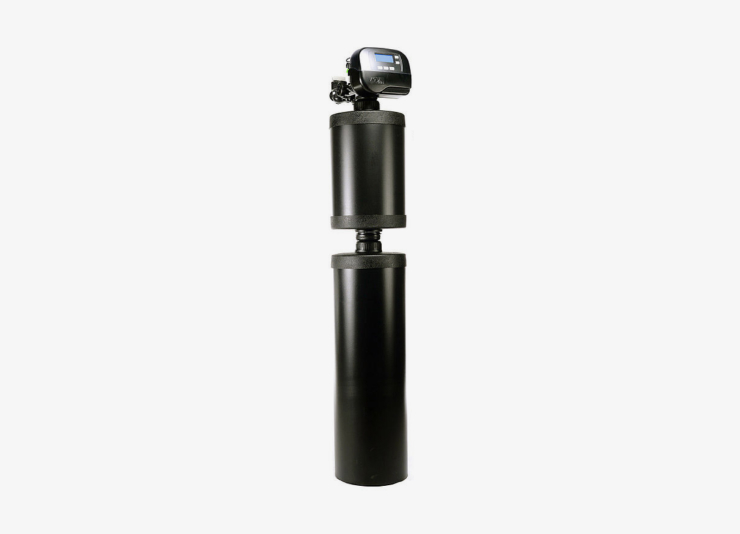Silica, also known as silicon dioxide (SiO₂), is one of the most abundant minerals on Earth. If you’ve ever looked closely at a granite countertop, you’ve seen silica in the form of quartz and silicate minerals. Because it’s everywhere in rocks and soil, silica often makes its way into groundwater and private wells.
Although silica isn’t considered harmful to human health, it can cause frustrating household problems, especially stubborn deposits on glass, fixtures, and plumbing. Understanding how silica gets into your water, what it does, and how to manage it can save you time and money.
How Silica Gets Into Water Supplies
Silica enters water through a slow process: groundwater gradually dissolves rocks and minerals rich in silicon dioxide. While the solubility of silica in water is low, its abundance in nature means that nearly every well has at least trace amounts.
Silica exists in two main forms in water:
- Reactive silica: Dissolved in water as bisilicate ions, behaving like a weak acid. It can be reduced using specialized ion exchange resins, but regeneration requires strong chemicals like caustic soda, so this method is limited to industrial applications.
- Colloidal silica: Ultra-fine particles suspended in water that resist normal filtration. This type cannot be removed by ion exchange and is especially challenging in residential settings.
Signs of Silica in the Home
Problems typically appear when silica concentrations reach about 20–25 mg/L. Common household signs include:
- Etching on glassware from dishwashers, leaving a milky or rainbow sheen
- Hard, white lines in toilet bowls that require scraping or pumice to remove
- Stubborn spotting on polished chrome, black porcelain sinks, and shower doors
- A frosted look on glass shower panels
- White film or buildup on granite countertops
Unlike calcium-based scale, silica deposits are extremely tough. Traditional descaling acids won’t remove them, and once glassware is etched, the damage is permanent.
Common Places to See Silica Deposits
Water line in toilet bowl - vary hard build up can only be removed with pumice stone or scraping
On polished chrome surfaces like tub fixtures
Obvious on black porcelain sinks and surfaces as hard white spots, "islands", or spidery networks
Silica domains on glass shower doors - "frosted look"
Dull, white silica build-up on granite counters
The most common attribute of all silica deposits is how hard and stubborn they are. These deposits are very tough and normal calcium scale removers (acids) will not remove silica deposits.
Treatment Options for Silica in Water
Silica removal is one of the most difficult water treatment challenges. Options include:
- Lime-soda softening
A chemical process that precipitates silica by raising the pH with lime and soda ash. Effective, but impractical for residential homes.
- Ultrafiltration
Specialized membranes can capture colloidal silica in industrial settings. These systems are expensive and not designed for home use.
- Anion exchange
Works for reactive silica but not colloidal silica. Requires hazardous regeneration chemicals, so not suitable for residential applications.
- Whole-house reverse osmosis (RO)
The most practical option for homeowners. RO can reduce both reactive and colloidal silica, but the system must be properly sized and often requires pretreatment for hardness and iron.
Because treatment is complex, many homeowners focus on prevention and mitigation instead of full removal.
Mitigating Silica Deposits at Home
If you live in an area with high silica levels, these steps can help minimize damage:
- Keep dishwasher water temperature below 140°F to reduce etching
- Use phosphate-free, soft-water detergents and allow dishes to air-dry
- Hand wash delicate glassware instead of running it through the dishwasher
- Wipe down chrome fixtures and shower glass to prevent spotting
- Clean toilet bowl water lines before buildup hardens, using specialized cleaners like AMAZ
- For existing silica stains, use products formulated for silica removal; some contain hydrofluoric acid (HF) and should be handled with extreme caution
- Apply protective coatings like Rain-X on shower doors or glass to reduce spotting
Key Takeaway
Silica in your water won’t harm your health, but it can damage your home’s fixtures, glass, and plumbing over time. Whole-house RO systems are the most effective residential treatment, but prevention and regular maintenance remain the most practical strategies for most households.


